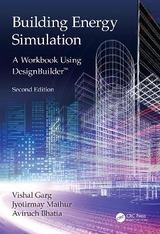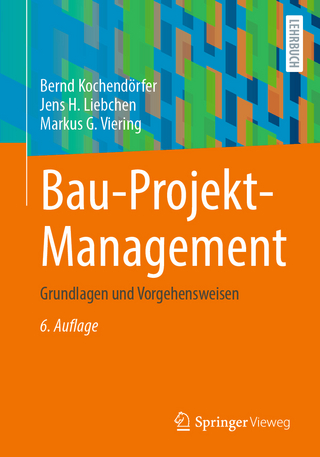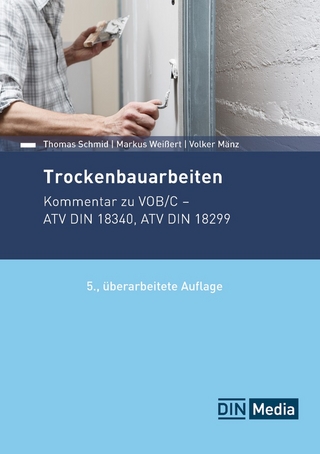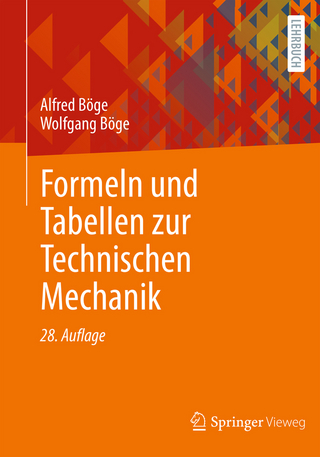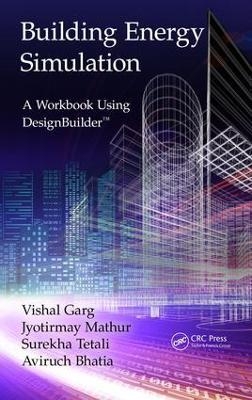
Building Energy Simulation
Productivity Press (Verlag)
978-1-4987-4451-5 (ISBN)
- Titel erscheint in neuer Auflage
- Artikel merken
Dr. Vishal Garg is associate professor and head of the Center for IT in Building Science, International Institute of Information Technology (IIIT), Hyderabad, India. His current research interests are in the areas of energy simulation and cool roofs. He teaches building automation and controls, energy simulation and lighting design and technology. He has conducted several national and international workshops on intelligent buildings, green buildings and energy simulation. He holds a BTech (Hons.) degree in civil engineering from MBM Engineering College, Jodhpur and a PhD from the Indian Institute of Technology, Delhi, India. Dr. Garg is actively involved in the green building movement, development of eTools and educational platforms for advancing energy efficiency in buildings and energy efficiency building code and its implementation. He was the founding president of the Indian chapter of International Building Performance Simulation Association and chaired the organizing committee of the international conference - Building Simulation 2015. Dr.-Ing. Jyotirmay Mathur is a professor of mechanical engineering and the head of the Centre for Energy and Environment at Malaviya National Institute of Technology, Jaipur, India. He has done postgraduation in energy studies from the Indian Institute of Technology, Delhi, India, and doctorate in energy systems from University of Essen, Germany. Dr. Mathur has published 52 research papers in refereed international journals and has presented more than 100 papers and talks at international seminars and conference, besides writing five books. Dr. Mathur works in the field of energy modelling, codes and standards, energy conservation in buildings, passive cooling, adaptive thermal comfort and building integrated photovoltaic systems. Surekha Tetali is an architect. She is currently pursuing her PhD in building performance and diagnostics from Carnegie Mellon University (CMU), Pittsburgh. She holds MS degree in IT in Building Science from IIIT, Hyderabad, India. Her current research involves modelling and simulations to analyse the impact of systems integration in buildings and built environment on microclimate, especially in urban areas. She has been working on a number of research and consulting projects involving building performance simulations and building retrofit design and analysis in the United States and India. Prior to joining CMU, she worked for five years as a building energy analyst in the Center for IT in Building Science at IIIT, Hyderabad, India. Aviruch Bhatia is an energy engineer. He is currently pursuing his PhD from IIIT, Hyderabad, India. He holds MTech in Energy Engineering from Malaviya National Institute of Technology, Jaipur, India, and MSc and MPhil in physics from University of Rajasthan, Jaipur, India. His areas of interest include building physics, calibrated energy simulation and fault detection and diagnostics in HVAC systems. Prior to joining IIIT, Hyderabad, he worked for three years as an assistant manager at Sustainability Group of Spectral Consultant Pvt. Ltd. (an AECOM company).
Preface
Acknowledgements
Authors
1 Getting Started with Energy Simulation
2 Geometry of Buildings
3 Material and Construction
4 Openings and Shading
5 Lighting and Controls
6 Heating and Cooling Design
7 Unitary HVAC Systems
8 Central HVAC System
9 Simulation Parameters
10 Natural Ventilation
11 Building Energy Code Compliance
12 Project: Small Office
13 Project: Single-Family Residence
14 Project: Large Office
Appendix A: Working of EnergyPlus™ Simulation
Appendix B: Weather Data and Tools
Index
| Erscheinungsdatum | 30.06.2017 |
|---|---|
| Zusatzinfo | 136 Tables, black and white; 618 Illustrations, black and white |
| Verlagsort | Portland |
| Sprache | englisch |
| Maße | 156 x 235 mm |
| Gewicht | 700 g |
| Themenwelt | Technik ► Bauwesen |
| Technik ► Bergbau | |
| Technik ► Elektrotechnik / Energietechnik | |
| Technik ► Maschinenbau | |
| ISBN-10 | 1-4987-4451-6 / 1498744516 |
| ISBN-13 | 978-1-4987-4451-5 / 9781498744515 |
| Zustand | Neuware |
| Informationen gemäß Produktsicherheitsverordnung (GPSR) | |
| Haben Sie eine Frage zum Produkt? |
aus dem Bereich
